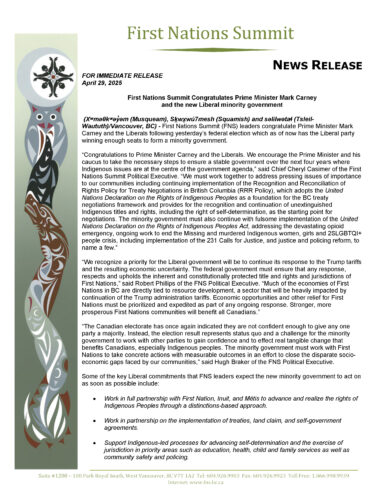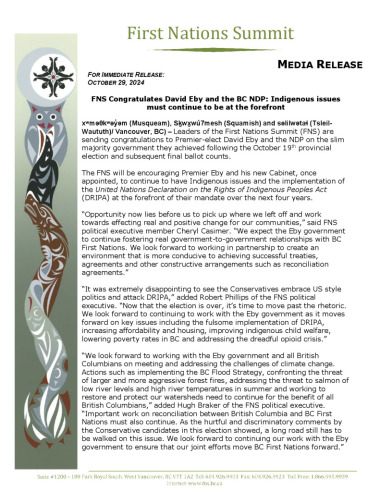The Road to Treaty Negotiations in British Columbia
From 1763 to present, a chronological timeline of key events.
Learn MoreCurrent Status of Negotiations
See the BCTC’s website for information on the current status of treaty negotiations in BC.
Learn MoreFiscal Relations
The fiscal relationship that is negotiated as part of Treaty arrangements will determine a First Nation’s access to capital, whether it is able to receive its fair share of funding and the extent to which it is able enjoy the benefits of any jurisdiction, land or settlement cash.
Learn MoreTreaty News

First Nations Summit Congratulates Prime Minister Mark Carney and the new Liberal minority government
April 29, 202504-29-25 FNS PR re 2025 federal election (Xʷməθkʷəy̓əm (Musqueam), Sḵwx̱wú7mesh (Squamish) and səlilwətaɬ...
Read More
FNS Congratulates David Eby and the BC NDP: Indigenous issues must continue to be at the forefront
OCTOBER 29, 2024 xʷməθkʷəy̓əm (Musqueam), Sḵwx̱wú7mesh (Squamish) and səlilwətaɬ (Tsleil-Waututh)/ Vancouver, BC) – Leaders of...
Read More
First Nation Summit congratulates Kitselas First Nation and Kitsumkalum First Nation
June 24, 2024 (xʷməθkʷəy̓əm (Musqueam), Sḵwx̱wú7mesh (Squamish) and səlilwətaɬ (Tsleil-Waututh), Vancouver, British Columbia – The...
Read More